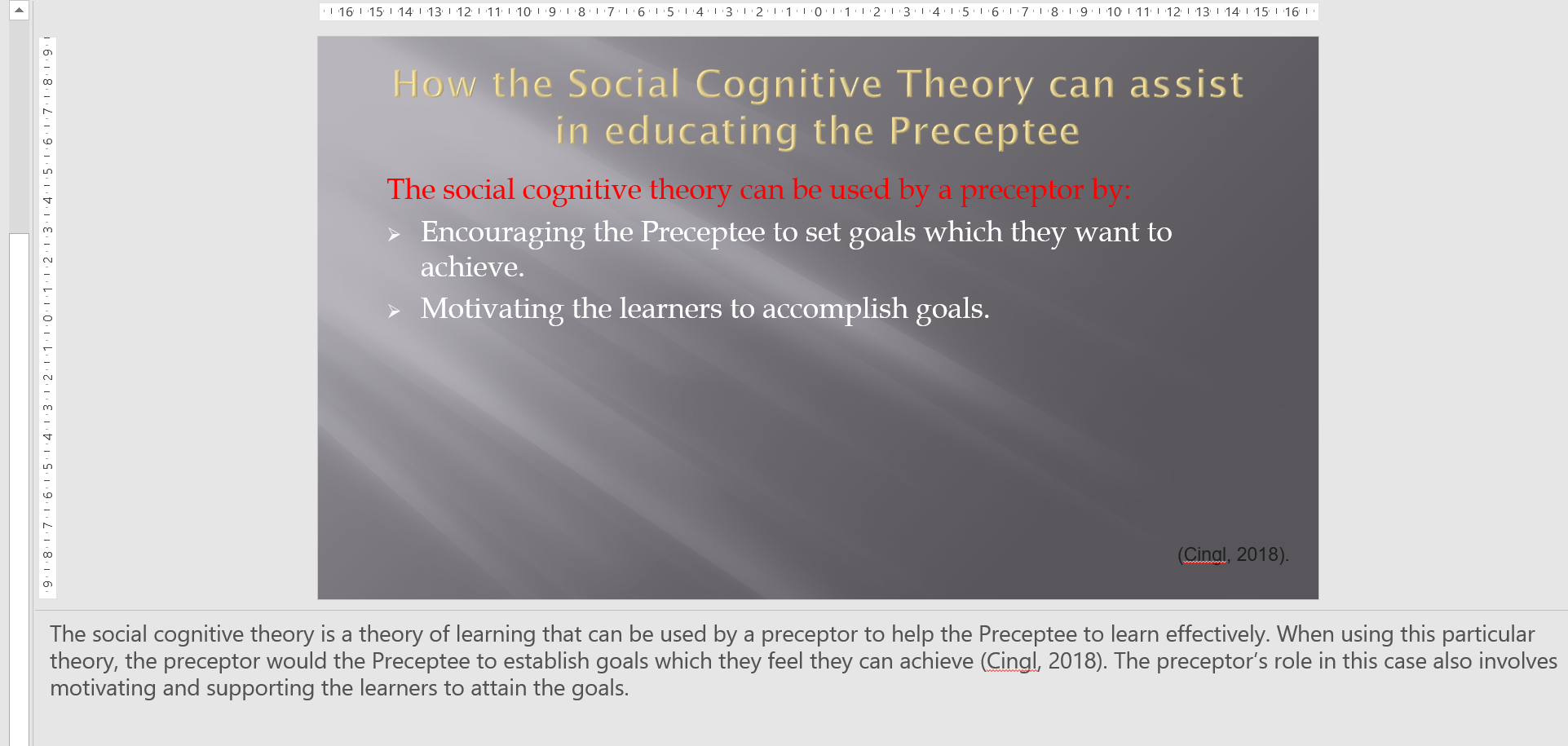Create a 6-7 minute video addressing the following questions/prompts: Briefly describe the ways that each of the major learning theories (behaviorist, cognitive, social learning, psychodynamic, and humanist) can be used to increase a behavior. Then, briefly describe the ways that each of these major theories can be used to decrease or extinguish a behavior. How can the learning theories be used in combination to change behavior and enhance learning? Discuss the following scenarios: You are a staff nurse preceptor, and you find that the nurse orientee you are working with has difficulty understanding the idea of titrating drug dosages on the basis of physiologic data. A weakness in which type(s) of learning might be underlying this problem? In addressing this orientee’s difficulty, what other information would you collect? You are preparing to counsel a nursing student who is failing a nursing course: How would your approach differ if you based your counseling on the Self-Efficacy Theor
Expert Answer and Explanation
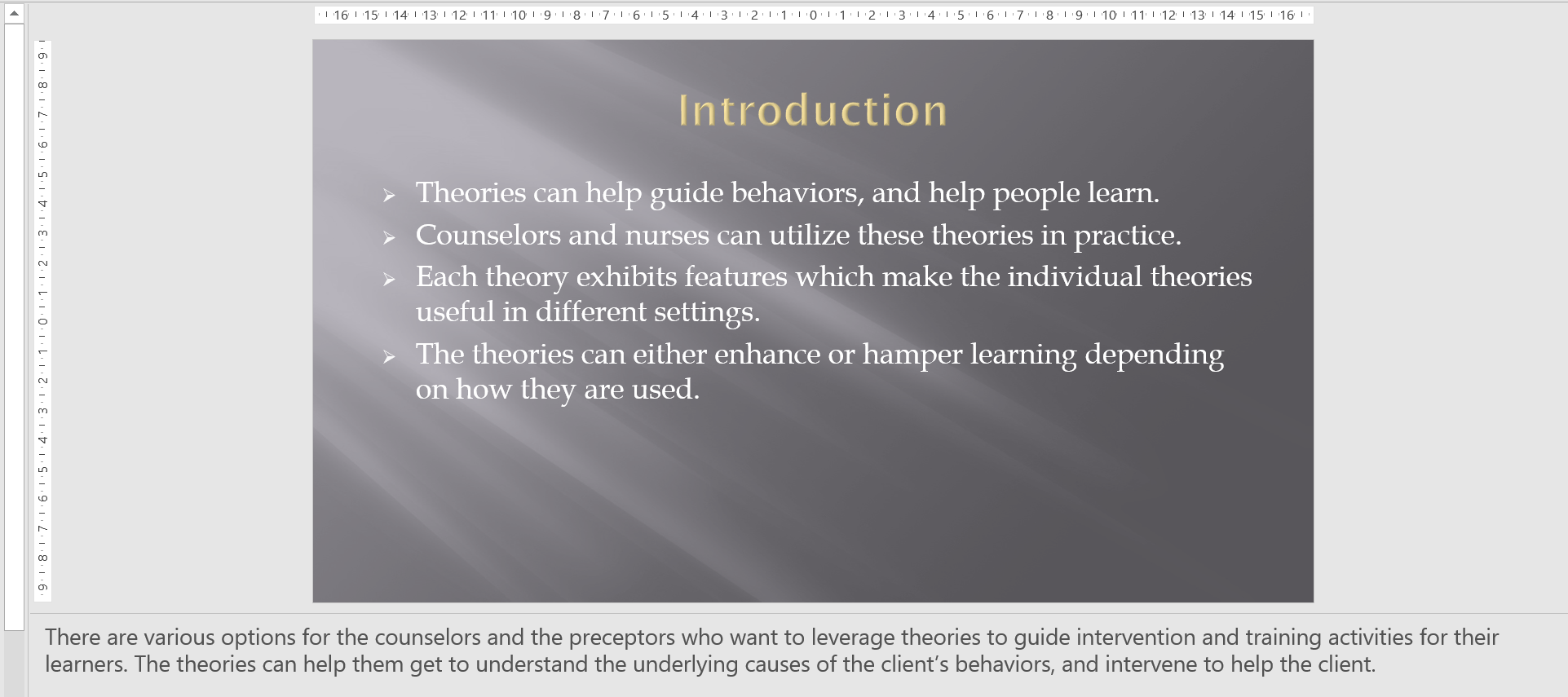
There are various options for the counselors and the preceptors who want to leverage theories to guide intervention and training activities for their learners. The theories can help them get to understand the underlying causes of the client’s behaviors, and intervene to help the client.
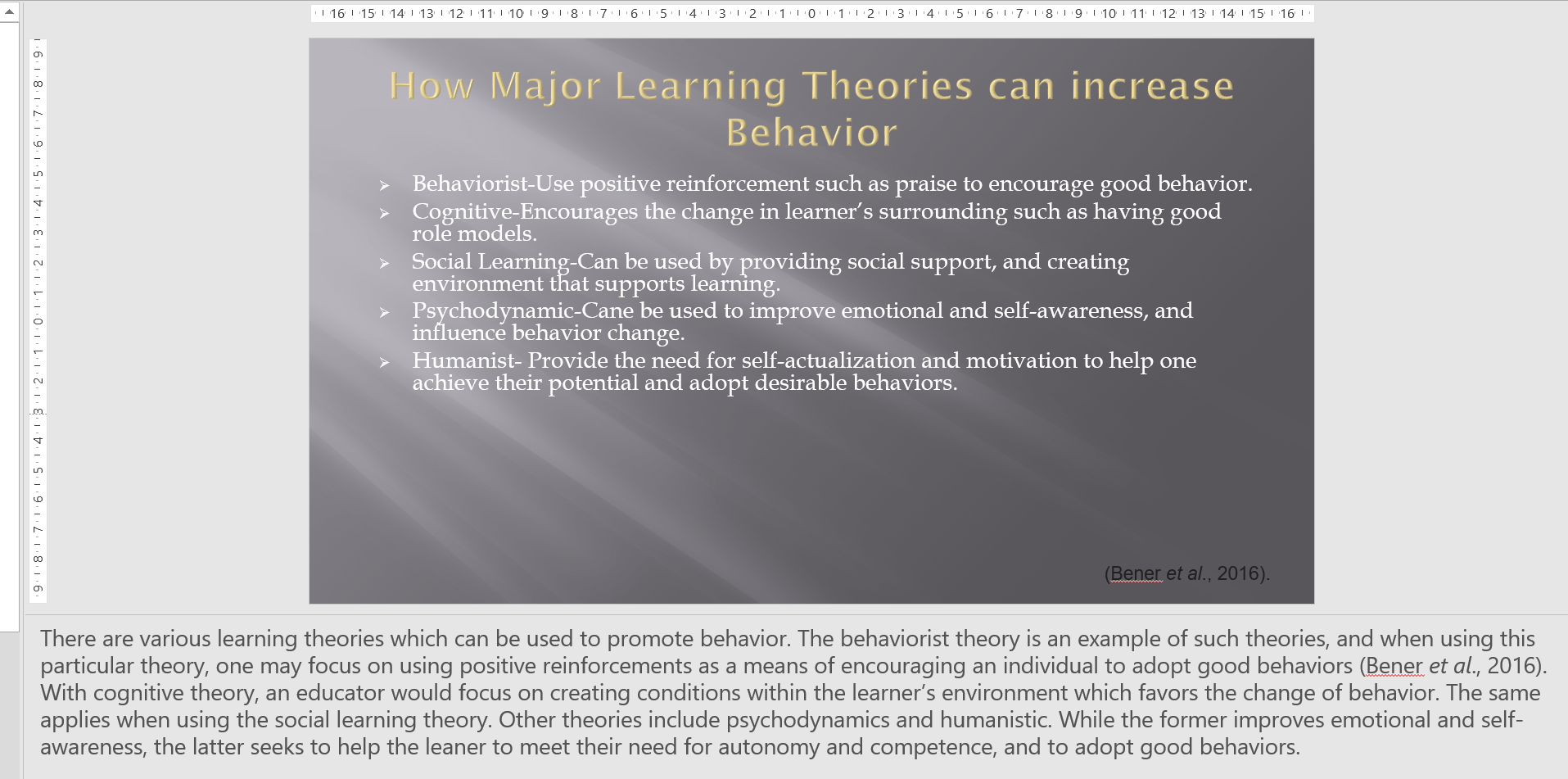
There are various learning theories which can be used to promote behavior. The behaviorist theory is an example of such theories, and when using this particular theory, one may focus on using positive reinforcements as a means of encouraging an individual to adopt good behaviors (Bener et al., 2016). With cognitive theory, an educator would focus on creating conditions within the learner’s environment which favors the change of behavior. The same applies when using the social learning theory. Other theories include psychodynamics and humanistic. While the former improves emotional and self-awareness, the latter seeks to help the leaner to meet their need for autonomy and competence, and to adopt good behaviors.

Although the theories can be useful in learning, they can hamper learning to a certain degree. For example, applying the behaviorism by banning students from attending classes on the ground that they failed to follow class rules, can worsen their performance by missing out on coursework. Similarly, removing the role models from a learner’s life, can put them at risk of developing undesirable behaviors (Gershman et al., 2016).
Using the social learning theory, a psychologist may expose the learner to unfavorable conditions which may have negative impact on learning. Considering that the Psychodynamic does not address the biological factors which affect behavior, it may encourage bead behavior among individuals.
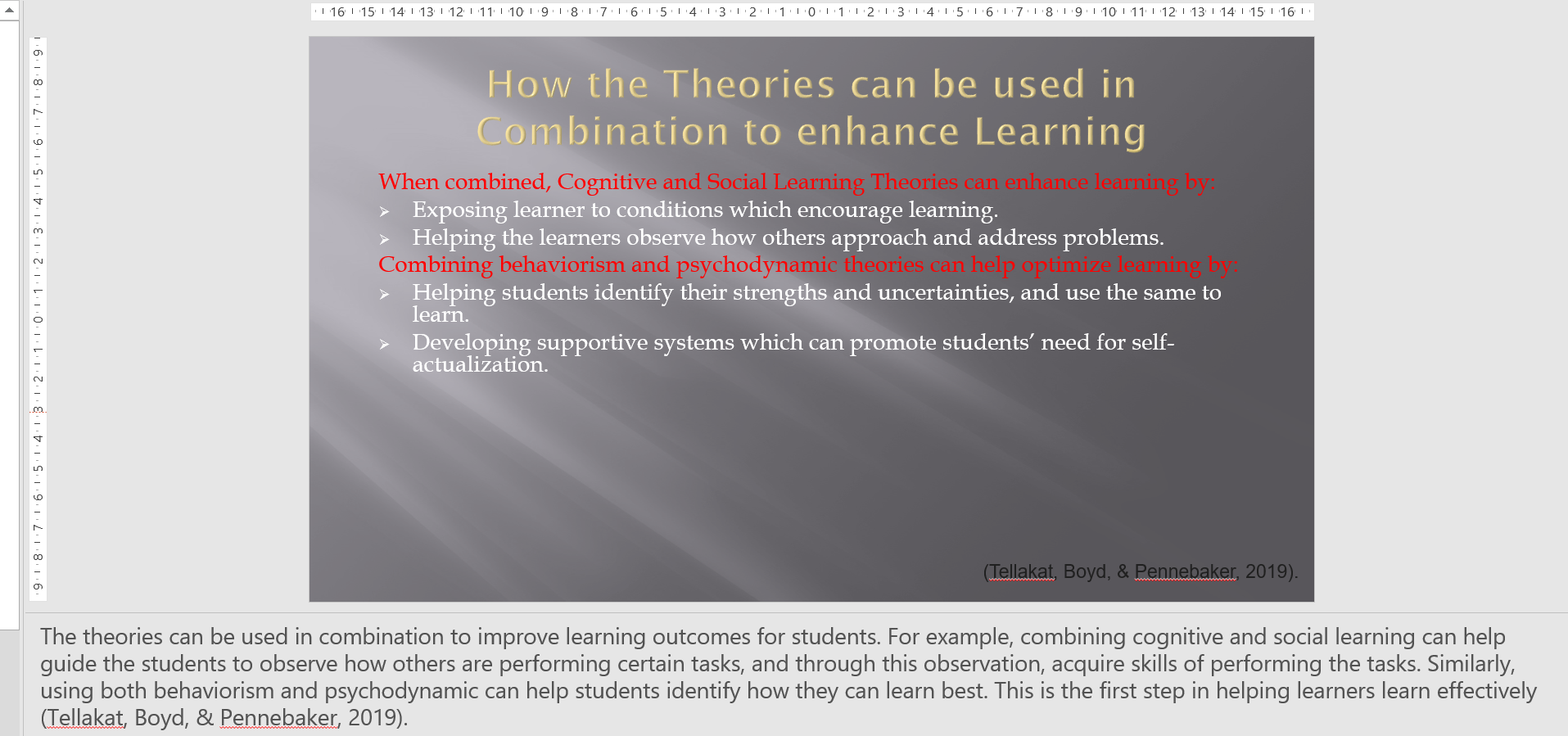
The theories can be used in combination to improve learning outcomes for students. For example, combining cognitive and social learning can help guide the students to observe how others are performing certain tasks, and through this observation, acquire skills of performing the tasks. Similarly, using both behaviorism and psychodynamic can help students identify how they can learn best. This is the first step in helping learners learn effectively (Tellakat, Boyd, & Pennebaker, 2019).
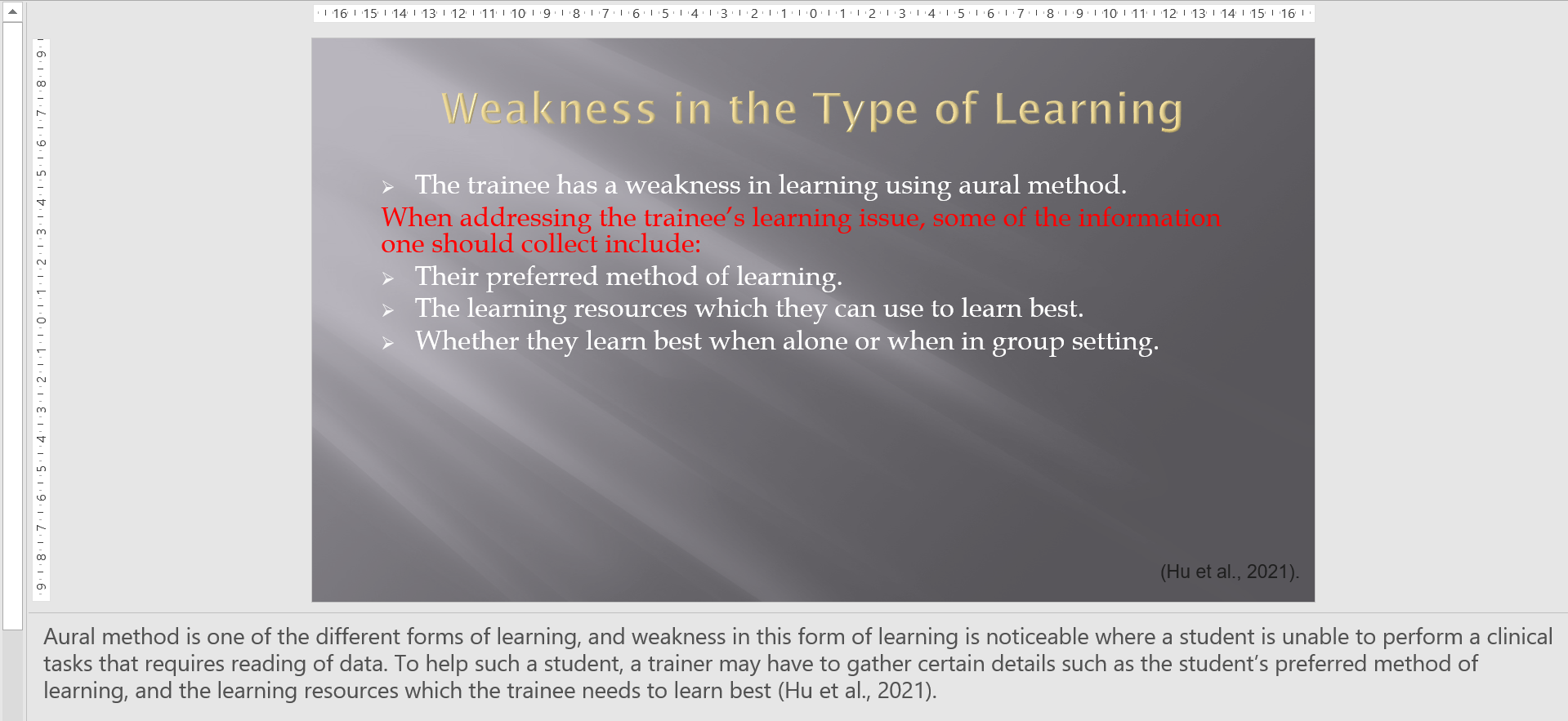
Aural method is one of the different forms of learning, and weakness in this form of learning is noticeable where a student is unable to perform a clinical tasks that requires reading of data. To help such a student, a trainer may have to gather certain details such as the student’s preferred method of learning, and the learning resources which the trainee needs to learn best (Hu et al., 2021).
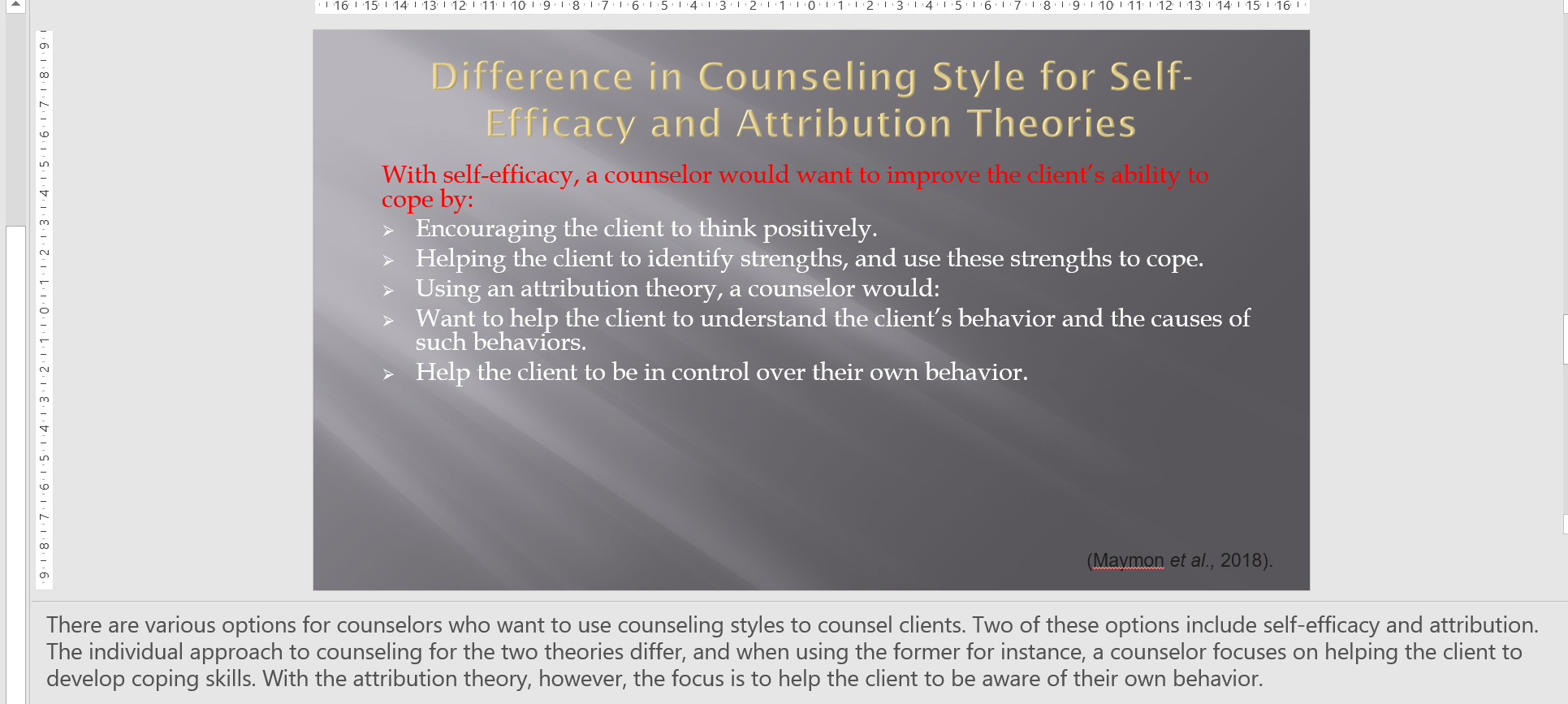
There are various options for counselors who want to use counseling styles to counsel clients. Two of these options include self-efficacy and attribution. The individual approach to counseling for the two theories differ, and when using the former for instance, a counselor focuses on helping the client to develop coping skills. With the attribution
Order this paperCreate a 6-7 minute video addressing the following questions/prompts: Briefly describe the ways that each of the major learning theories (behaviorist, cognitive, social learning, psychodynamic, and humanist) can be used to increase a behavior. Then, briefly describe the ways that each of these major theories can be used to decrease or extinguish a behavior. How can the learning theories be used in combination to change behavior and enhance learning? Discuss the following scenarios: You are a staff nurse preceptor, and you find that the nurse orientee you are working with has difficulty understanding the idea of titrating drug dosages on the basis of physiologic data. A weakness in which type(s) of learning might be underlying this problem? In addressing this orientee’s difficulty, what other information would you collect? You are preparing to counsel a nursing student who is failing a nursing course: How would your approach differ if you based your counseling on the Self-Efficacy Theor
Expert Answer and Explanation

There are various options for the counselors and the preceptors who want to leverage theories to guide intervention and training activities for their learners. The theories can help them get to understand the underlying causes of the client’s behaviors, and intervene to help the client.

There are various learning theories which can be used to promote behavior. The behaviorist theory is an example of such theories, and when using this particular theory, one may focus on using positive reinforcements as a means of encouraging an individual to adopt good behaviors (Bener et al., 2016). With cognitive theory, an educator would focus on creating conditions within the learner’s environment which favors the change of behavior.
The same applies when using the social learning theory. Other theories include psychodynamics and humanistic. While the former improves emotional and self-awareness, the latter seeks to help the leaner to meet their need for autonomy and competence, and to adopt good behaviors.

Although the theories can be useful in learning, they can hamper learning to a certain degree. For example, applying the behaviorism by banning students from attending classes on the ground that they failed to follow class rules, can worsen their performance by missing out on coursework. Similarly, removing the role models from a learner’s life, can put them at risk of developing undesirable behaviors (Gershman et al., 2016).
Using the social learning theory, a psychologist may expose the learner to unfavorable conditions which may have negative impact on learning. Considering that the Psychodynamic does not address the biological factors which affect behavior, it may encourage bead behavior among individuals.

The theories can be used in combination to improve learning outcomes for students. For example, combining cognitive and social learning can help guide the students to observe how others are performing certain tasks, and through this observation, acquire skills of performing the tasks. Similarly, using both behaviorism and psychodynamic can help students identify how they can learn best. This is the first step in helping learners learn effectively (Tellakat, Boyd, & Pennebaker, 2019).

Aural method is one of the different forms of learning, and weakness in this form of learning is noticeable where a student is unable to perform a clinical tasks that requires reading of data. To help such a student, a trainer may have to gather certain details such as the student’s preferred method of learning, and the learning resources which the trainee needs to learn best (Hu et al., 2021).

There are various options for counselors who want to use counseling styles to counsel clients. Two of these options include self-efficacy and attribution. The individual approach to counseling for the two theories differ, and when using the former for instance, a counselor focuses on helping the client to develop coping skills. With the a
Order this paperCreate a 6-7 minute video addressing the following questions/prompts: Briefly describe the ways that each of the major learning theories (behaviorist, cognitive, social learning, psychodynamic, and humanist) can be used to increase a behavior. Then, briefly describe the ways that each of these major theories can be used to decrease or extinguish a behavior. How can the learning theories be used in combination to change behavior and enhance learning? Discuss the following scenarios: You are a staff nurse preceptor, and you find that the nurse orientee you are working with has difficulty understanding the idea of titrating drug dosages on the basis of physiologic data. A weakness in which type(s) of learning might be underlying this problem? In addressing this orientee’s difficulty, what other information would you collect? You are preparing to counsel a nursing student who is failing a nursing course: How would your approach differ if you based your counseling on the Self-Efficacy Theor
Expert Answer and Explanation

There are various options for the counselors and the preceptors who want to leverage theories to guide intervention and training activities for their learners. The theories can help them get to understand the underlying causes of the client’s behaviors, and intervene to help the client.

There are various learning theories which can be used to promote behavior. The behaviorist theory is an example of such theories, and when using this particular theory, one may focus on using positive reinforcements as a means of encouraging an individual to adopt good behaviors (Bener et al., 2016). With cognitive theory, an educator would focus on creating conditions within the learner’s environment which favors the change of behavior.
The same applies when using the social learning theory. Other theories include psychodynamics and humanistic. While the former improves emotional and self-awareness, the latter seeks to help the leaner to meet their need for autonomy and competence, and to adopt good behaviors.

Although the theories can be useful in learning, they can hamper learning to a certain degree. For example, applying the behaviorism by banning students from attending classes on the ground that they failed to follow class rules, can worsen their performance by missing out on coursework. Similarly, removing the role models from a learner’s life, can put them at risk of developing undesirable behaviors (Gershman et al., 2016).
Using the social learning theory, a psychologist may expose the learner to unfavorable conditions which may have negative impact on learning. Considering that the Psychodynamic does not address the biological factors which affect behavior, it may encourage bead behavior among individuals.

The theories can be used in combination to improve learning outcomes for students. For example, combining cognitive and social learning can help guide the students to observe how others are performing certain tasks, and through this observation, acquire skills of performing the tasks. Similarly, using both behaviorism and psychodynamic can help students identify how they can learn best. This is the first step in helping learners learn effectively (Tellakat, Boyd, & Pennebaker, 2019).

Aural method is one of the different forms of learning, and weakness in this form of learning is noticeable where a student is unable to perform a clinical tasks that requires reading of data. To help such a student, a trainer may have to gather certain details such as the student’s preferred method of learning, and the learning resources which the trainee needs to learn best (Hu et al., 2021).

There are various options for counselors who want to use counseling styles to counsel clients. Two of these options include self-efficacy and attribution. The individual approach to counseling for the two theories differ, and when using the former for instance, a counselor focuses on helping the client to develop coping skills. With the attribution theory, however, the focus is to help the client to be aware of their own behavior.
